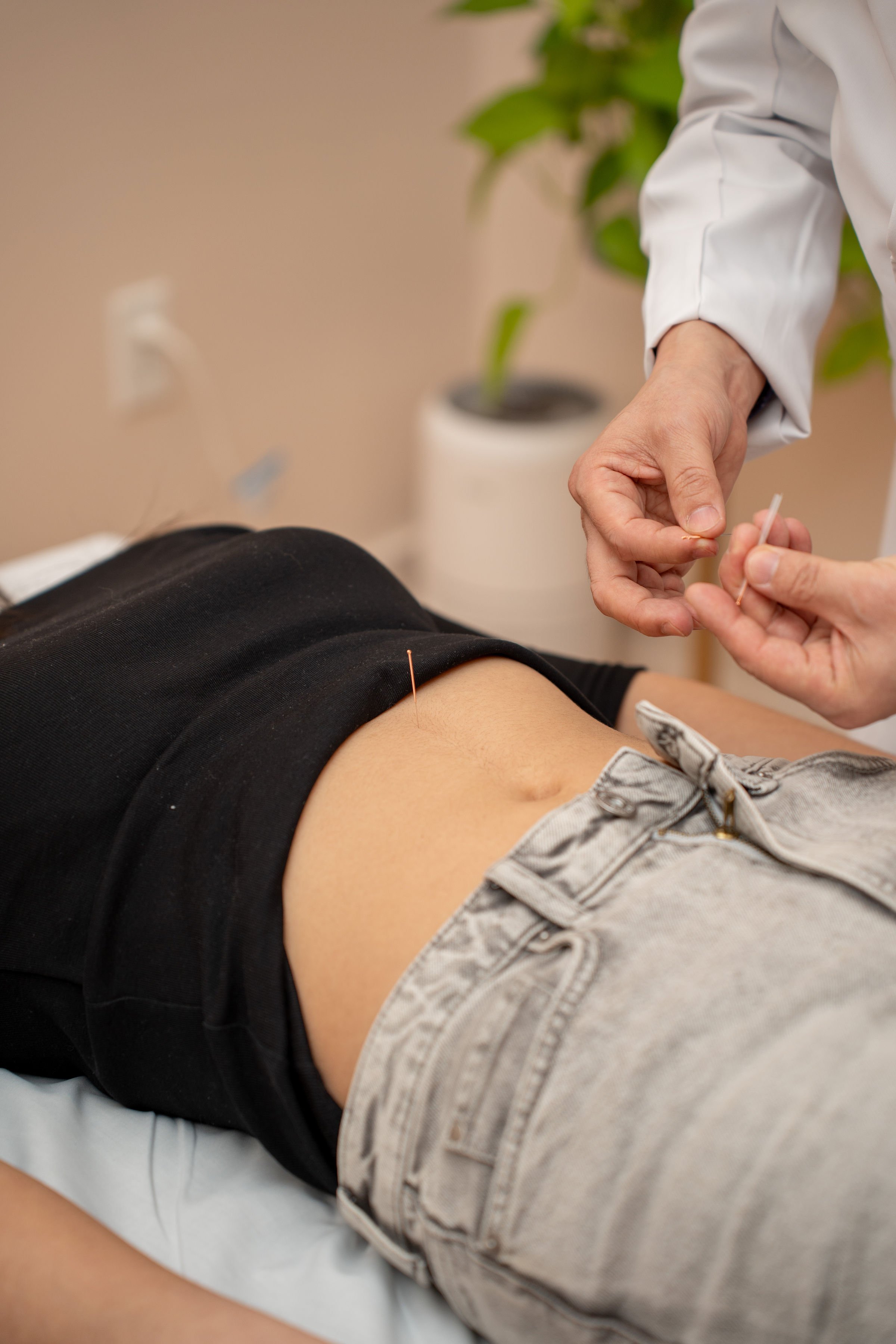Dry Needling versus acupuncture
Dry needling and acupuncture are similar modalities with different focuses and treatment outcomes. While both involve the insertion of thin needles into specific points and focus on bringing pain relief and healing they have unique applications, origins and methods of use. Check out the facts below to learn which modality is best for you and what sets them apart.
Acupuncture
Acupuncture is a healing modality that has been used for thousands of years and comes out of Traditional Chinese Medicine (TCM). It aims to restore balance in the body and remove energy blockages by focusing on strengthening qi (life force energy). Acupuncture helps increase circulation, speed up healing time, reduce inflammation and promote stress relief. It focuses on the root cause of each issue and the creation of unique treatment plans for each client. Needles are shallowly inserted into specific meridian points to stimulate the central nervous system. Following insertion, needles are often manipulated to increase the effectiveness of the treatment. Acupuncture is performed by trained and registered acupuncturists who receive theoretical and clinical training in the practice.
Dry Needling
Dry needling is a Western practice that emerged in the 20th century. It focuses on particular trigger points in muscles, tendons and soft tissue to reduce pain and improve muscle function. The practice is rooted in anatomy and neurophysiology and focuses on the musculoskeletal system. It uses deeper needling to target specific muscles and once needles are inserted there is no manipulation. The treatment is traditionally performed by physiotherapists, sports injury therapists, chiropractors and osteopaths. Dry needling is typically used as part of a larger physical therapy regime and requires less specialized training compared to acupuncture.
What Modality is Best for You?
Acupuncture is best for:
Holistic Wellness
Chronic & Complex Conditions
Root Cause Treatment
Integrative Therapy
Dry Needling is best for:
Muscle relief
Muscular issues


